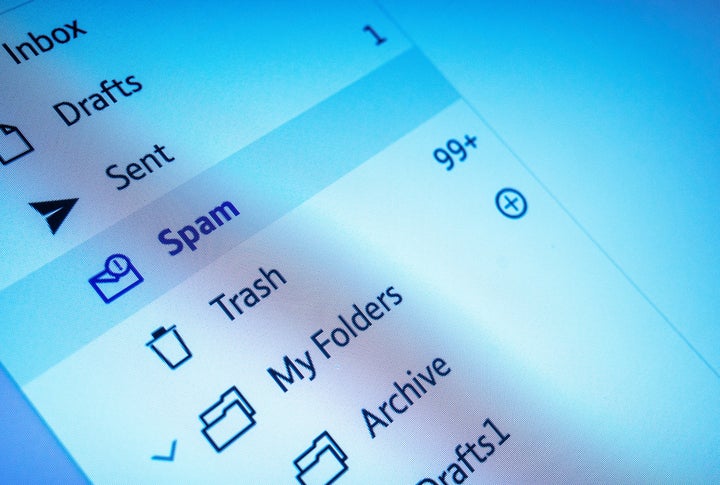
When you open up your inbox, you may have a few emails that you actually need to address ― along with dozens of spam and junk messages that you did not ask or want to receive. Maybe your texts are flooded with them, too. According to a report from the spam blocking company RoboKiller, people received more than 47 billion spam texts in 2021.
Spam messages can be a distracting nuisance to see, but instead of simply deleting or ignoring these advertisements for surprise lottery winnings or sketchy business proposals, you should consider going one step further: reporting them as junk.
That’s because every time you report a message as junk or spam, it teaches your email or phone provider what spam looks like. And in the long run, that will help reduce the spam that ends up reaching you. As Gmail notes on its help centre guide: “As you report more spam, Gmail identifies similar emails as spam more efficiently.”
When you report something as spam or junk, your messaging system will review the sender, subject and text, said Pierre-Martin Tardif, member of the IT professional organisation ISACA and a professor at Université de Sherbrooke in Quebec.
If you and other users report multiple spam messages from the same address, your mailing system may even block all mail or texts from that sender, he said. With enough spam reports, certain addresses can end up banned as a result.
“If the sender’s email system sends a tons of junk mail or spam, it can be added to a blacklist, preventing the sender’s email system from sending email to other systems,” Tardif said.
You can check if your own domain or IP address got blacklisted by checking MxToolbox, a free online blacklist check tool.
How to report spam messages
Most email services, such as Gmail, Hotmail or Yahoo, as well as phone operating systems will include an option to mark messages as junk or report them as spam.
On Gmail: You select an email after opening the app. Then at the top bar of your inbox, you click the exclamation point that will report spam.
On iPhones: When you use iMessage, you can report spam or junk messages to Apple in two ways. If you do not want to open the message, you can swipe left, tap the trash can icon, then select Delete and Report Junk. If you already did open the message, a Report Junk link will appear at the bottom if the message was from an unknown sender. From there, you select that link.
On Android phones: You would tap and hold the conversation you want to report as junk. Then you would tap Block, then Report Spam.
Spam messages can also be part of scams to gain access to your information and assets. Under such a scam, the bad actor will urge you to take action right away so you do not have time to think through what is being asked of you. Buy yourself a little more time to think by turning on your phone service’s built-in spam filters. Here’s how:
On iPhones: Go to Settings, then Messages. From there scroll until you see the option for Filter Unknown Senders and tap on that option. That way, any message from an unknown sender gets filtered to another folder you will not be notified about.
On Android: Go to your Messages app, click on the three-dots icon in the upper right corner, then select Enable Spam Protection.
Getting spam is not just annoying ― in worst case scenarios, it can also be the reason why you lose money.
Americans lost $330 million from phishing text scams in 2022, with a median loss of $1,000, according to the the Federal Trade Commission. By impersonating bank representatives, delivery services and other businesses in texts and emails, these phishing scammers can get you to give up important personal information. That’s why it helps to stay wary if anyone you don’t know is claiming you need to click a link to pay a “redelivery fee” or claim a prize.
When in doubt, call the delivery service or business directly instead of relying on a text or email alert. And before you delete the spam message, report it.